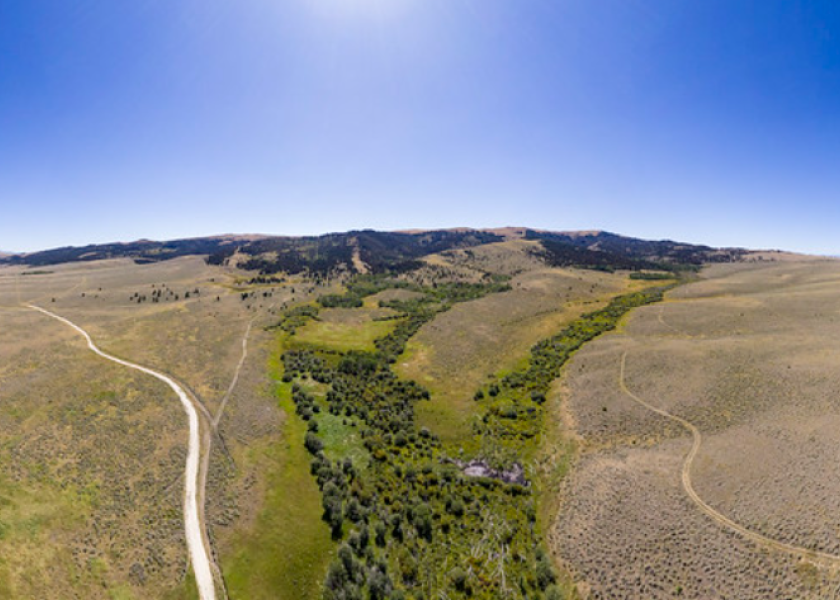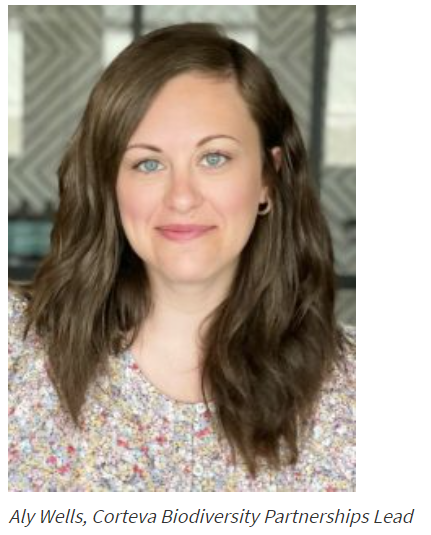How Habitat Management Plans Drive Healthier Land, Livestock and Forages

David Frabotta is the Director of Climate-Smart Content for Trust In Food, a Farm Journal initiative. Learn more at www.trustinfood.com
Funding for habitat management is squarely under the microscope as legislators and lobbyists evaluate how farm bill programs will be administered in their next iteration. Among the voluminous calls for change, many legislators, agriculture companies and conservation organizations are lobbying for programs like the Conservation Reserve Program, as an example, to be more flexible so farmers and ranchers can continue to conserve or regenerate habitats on private, working lands.
The farm bill negotiations are part of a global movement to address biodiversity loss. In December, the UN Biodiversity Conference (COP 15) yielded a landmark global biodiversity framework that identified 23 goals to achieve by 2030, including restoration of 30% of terrestrial and marine ecosystems, halving global food waste and reducing the loss of high biodiversity importance to near zero.
Global biodiversity has become critical as “the planet is experiencing a dangerous decline in nature as a result of human activity,” according to the UN, which says 1 million plant and animal species are now threatened with extinction, many within decades.
As with climate change and greenhouse gas emissions reductions, there is an emphasis for greater private-sector action and investment into habitat preservation.
Also, like climate change, agriculture operations can be seen as both contributors to biodiversity loss as well as a solution to restoring and connecting ecosystems that have significant benefits to farming operations and the communities and wildlife around them. Farmers understand this connection.
In a recent Trust In Food survey of 500 farmers in 5 states, more than two-thirds of farmers say the top benefit of conservation agriculture is better protected wildlife and wildlife habitats. Ecological diversity provides farmers with healthier soils, improved forage potential and a greater number of beneficial insects that can mitigate input costs, among other benefits.
Corteva Agriscience is helping farmers and ranchers advance biodiversity through partnerships with organizations including the National Fish and Wildlife Foundation and Pheasants Forever. Corteva and its partners are helping to establish habitat management plans that provide action-based tools that control invasive species, improve the use and value of their land, protect valuable grassland birds and strengthen the related biodiversity of the ecosystem.
Biodiversity is a core focus area in the company’s sustainability commitments. It is where the company sees one of its biggest opportunities to leverage the breadth of capabilities and touch points with farmers and ranchers to affect meaningful and measurable change, says Corteva Biodiversity Partnerships Lead Aly Wells.
One example of Corteva’s biodiversity partnerships is the company’s engagement with Dakota Audubon’s Conservation Forage Initiative that works with ranchers to establish management plans addressing grazing practices, grassland establishment and conservation as ways to increase productivity by reducing erosion and improving soil health while improving habitat for rangeland birds.
Corteva is also working with the National Fish and Wildlife Foundation in the Audubon Conservation Ranching Initiative in the Rockies, where the partners are working to restore and improve management and biodiversity habitat on more than 30,000 acres of grasslands.
Additionally, Corteva provides resources through its LandVisor platform, a vegetation management platform that uses field data and GIS imaging to help manage forage productivity and to help control invasive species and provide actionable insights for land management and encourage native grasses and forbs to thrive.
“As an industry, we need to do more to measure and communicate biodiversity impacts as they relate to improving productivity while limiting the impact to wildlife, beneficial organisms and soil health,” Wells says. “We know that productivity is critically important for farmers and ranchers, so if we can communicate the return on investment of these biodiversity practices, that could encourage more participation.”
In late 2022, Corteva announced a 3-year partnership with Pheasants Forever and Quail Forever to enhance habitat in non-crop areas as part of the Rights-of-Way & Energy (ROWE) Habitat Program, which assesses and measures habitat, biodiversity and conservation on transportation, railway, oil and gas, electric and solar corridors across the country.
The partnership will pair the knowledge of conservation experts and wildlife biologists with solutions and strategies recommended by Corteva Agriscience Vegetation Management Specialists. This approach is expected to help industry practitioners create sustainable, integrated habitat management plans with the potential to improve up to 5 million acres of the estimated 35 million acres of rights-of-way and energy corridors in the United States. This would be a 14% improvement in total rights-of-way and energy acres.
“Corteva understands the unique challenges facing farmers, ranchers and the ecosystems in which they operate,” Wells says. “We’re committed to supporting biodiversity through a combined approach focusing on our products, productivity impact using Corteva’s technologies, partnerships with organizations that share our vision and improvements to our own Corteva operations.”








